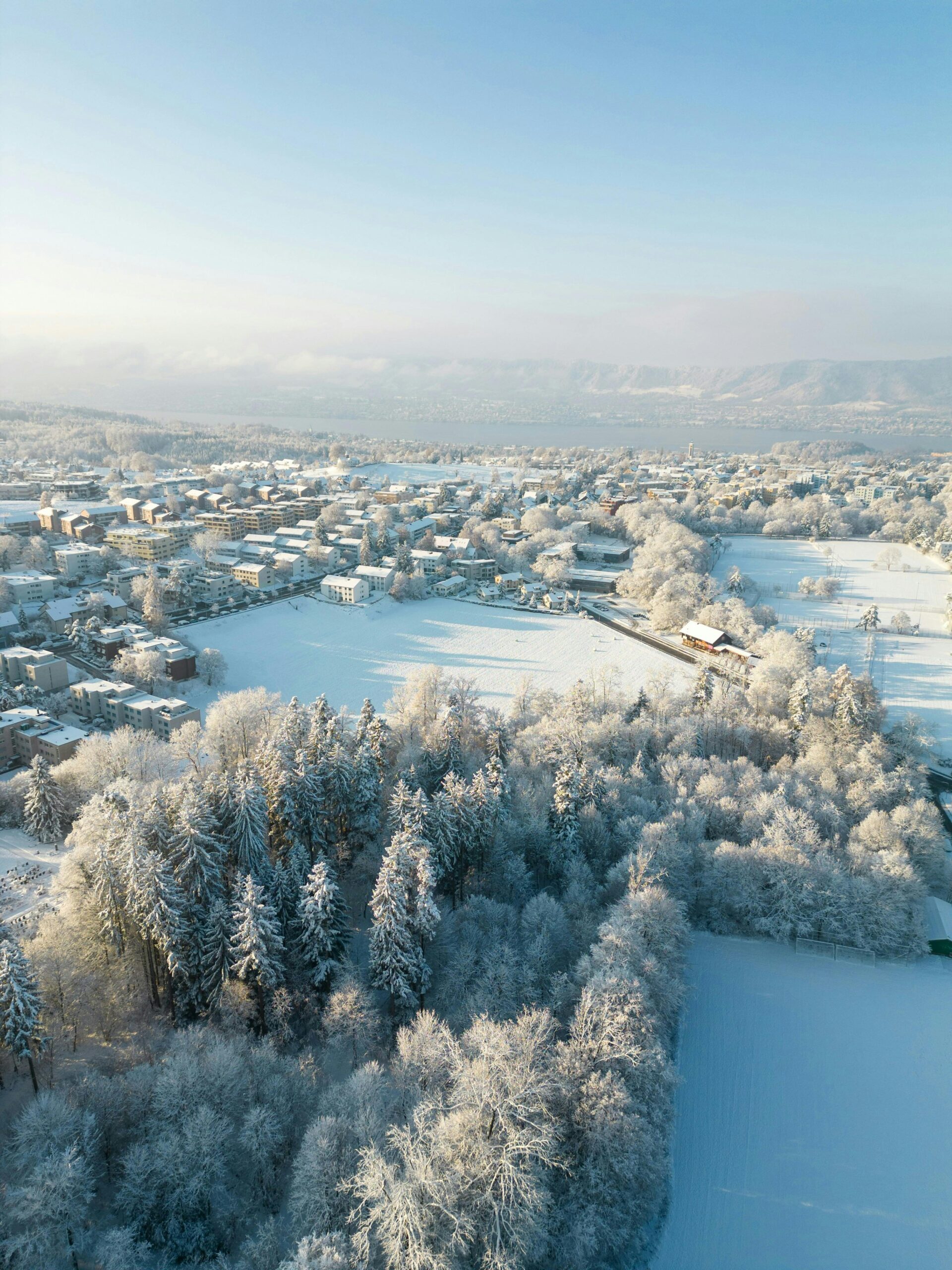Switzerland: Then & Now
When I first came to Switzerland on a visit in 1969, there was a population of 5.5 million, 89% of which were authentic organic Swiss residents. I stayed with my then boyfriend, Fritz, at his parents’ little terraced house on the outskirts of the city of Winterthur. At the time, Switzerland was very insular, with scarcely any foreign impact on ordinary citizens. The streets were spotless and the little, mostly blond children ran around barefoot, reminiscent of scenes in the children’s film, “Heidi”. Fritz’s father worked as a toolmaker in the same large factory just down the road, where he had taken his apprenticeship forty years before. If you walked past the house late afternoon, you could hear him playing the accordion every day. Fritz’s mother kept the little home immaculate and intricately embroidered handkerchiefs as a hobby. All school children and many workers went home to lunch, triggering traffic jams every lunchtime. This meant that women were quite bound to the house, with children having different timetables and coming and going at sometimes a breathtaking pace. People were not allowed to use their washing machines during the lunchtime, as the limited electricity supply was reserved for cooking lunch in all the individual households.
A lot of Italian workers were allowed to come and work for a season, but they kept themselves very much to themselves in one particular part of town, and went home at the end of the season Walking around the town during the day, there was no evidence of any foreigners, and you heard only the Swiss-German dialect. Senior ladies would meet each other while out shopping, to enjoy a coffee, together with the mandatory piece of Black Forest Cake. In fact, I harboured a sneaky hunch that my mother-in-law (whose name really was Heidi), deliberately created a mission to go into town each day, to escape the rather stiff confines of her home for an hour or two. She seemed to think, even after thirty years of marriage that she should still adhere to a suppliant and rigid role in the household. She was eager to prove her worth and instinctively created justification to take flight and have a well-deserved chat with similarly inclined ‘colleagues’. Over the years, she left me with the distinct impression that most of these ladies’ husbands had retired and were hanging around the home like clouds of dense, damp fog. Hence the lust for liberty.
In 1972 Fritz and I married and lived in various locations in Spain and South America, due to his job as an engineer for a large Swiss company. In all these places, we made some good friends, as circumstances gifted us with a pleasant life, travelling around from one assignment to the next. Nine months on the dot, after marrying, our little boy was born, but when he reached the age of 6, it became vital for him to live in a steady routine, in one school, in one location with one language. My Swiss husband was determined to continue working abroad, in preference to remaining in his own country of birth, with his new family. So, he decided that I should stay alone with our son in Switzerland and he would come home at least for Christmas each year. This was when the hard reality of Switzerland hit me, with a forbidding, cultural shock. We had rented a small flat, in a dormant subdistrict of Winterthur consisting entirely of apartment blocks, about five shops and a school. Most of the men worked in the large local factory and their wives stayed at home and cooked lunch at 11:30 for the entire family. I was extremely lonely. I had my little boy, but I had no friends, I didn’t speak the language and no one seemed to speak English or Spanish. My efforts to pick up the language and make contact with the local residents met with guarded resistance. As far as I could determine, I was the only ‘foreigner’ in the entire neighbourhood. In addition to that, there were no visible signs of a husband around, which sparked suspicion in the sober seventies. I learnt in the fullness of time, that many Swiss women distrusted single women, by default, particularly the females who kept themselves presentable. (Not that I would have entertained any one of their husbands in my worst nightmare).
Swiss-German television was mind-numbingly boring, the radio even worse, and there were no English books, magazines or newspapers around at that time. I had a desperate need to help myself through this, despite loud protestations from my husband, safely tucked away somewhere else. Through Stefan’s new school, one of the mothers agreed to be the daytime minder for him, and I managed to get the only available English-speaking job at the time. It was with Kuwait Airways in Zurich airport, managing the weekly flights with arrivals on Fridays and departures on Saturdays. I had a couple of 2-week courses in Kuwait, which was (let’s say) very instructive on several fronts, being the only female among mostly Arab classmates from all over the Near East. Back in Zurich Airport, there was a mixed constellation of nationalities around me and it was refreshing to go to work each day, and be among them and not feel so out of place. At home, the neighbours stayed distant and very Swiss, and complained if my radio played music over the lunchtime, when it was expressly forbidden, or if my car didn’t sit squarely in the centre of my very narrow parking space. The periodic notes attached to my windscreen carefully protected from the rain by a plastic cover, were arduously explained to me by my mother-in-law, that I should park my car three centimetres more to the left or right of the parking space. It was depressing and I was finding the Swiss increasingly hard going. I was pining for my previous Spanish-speaking life and the light-hearted and fun-loving people around me.
Much water has surged under the bridge since then and today, I live in a small town on the outskirts of Zurich, with very different neighbours. But they are still reserved and careful, who they let into their lives, although we are on first name terms. For three consecutive years I invited them to aperitifs and they poured in at 6 in the evening and staggered out at two in the mornings, half sozzled and with full bellies. Curiously enough, despite all my efforts, there was never a return invitation, so I finally gave up, when Covid came along. When a parcel is delivered for one of them and I knock at their door to hand it over, said door is open just wide enough to take the object, and after a few niceties, the door is firmly shut again.
The population of Switzerland in 2025 is nine million, with roughly 40% of adults having a migration background at a national level, although it is considerably higher in some areas. It might be normal to assume that this level of foreign influence would dilute the otherwise uptight Swiss mentality, but it seems to have caused many of them to crawl back even further into their shell. This is a phenomenon which is most pronounced in Canto of Zurich. The citizens in the more mountainous areas are not so complicated and form more of an open society, which welcomes people with heartfelt affection. Yes indeed, Switzerland has changed radically today, like everywhere else. But with people living ever longer, the disparity between then and now, particularly for the “Baby Boomers” is quite startling. Progress is accelerating and with it comes a pressing need to stay abreast of these continuous transformations. I am glad to have experienced the “Olde World”, but I’m similarly grateful to have lived long enough to enjoy the innovations of ever-expanding technology, and all it offers to normal people like me, persuading Switzerland to open up and take part in life.

Photo: pexels Ilia Bronskiy

